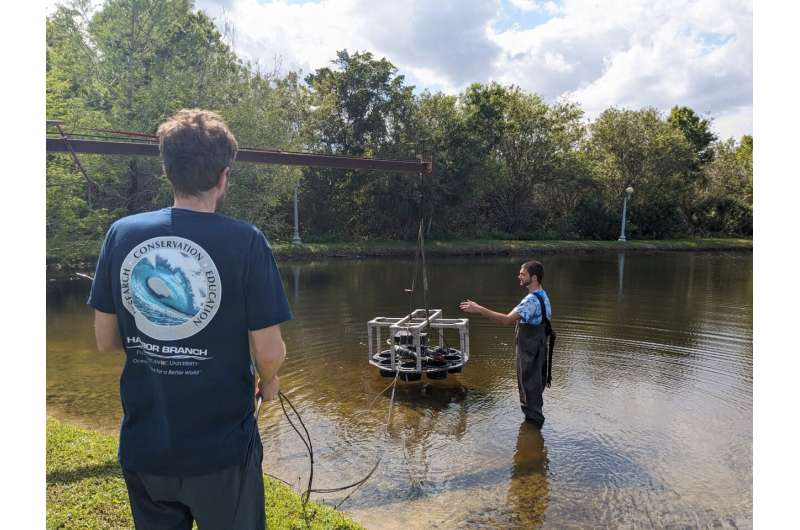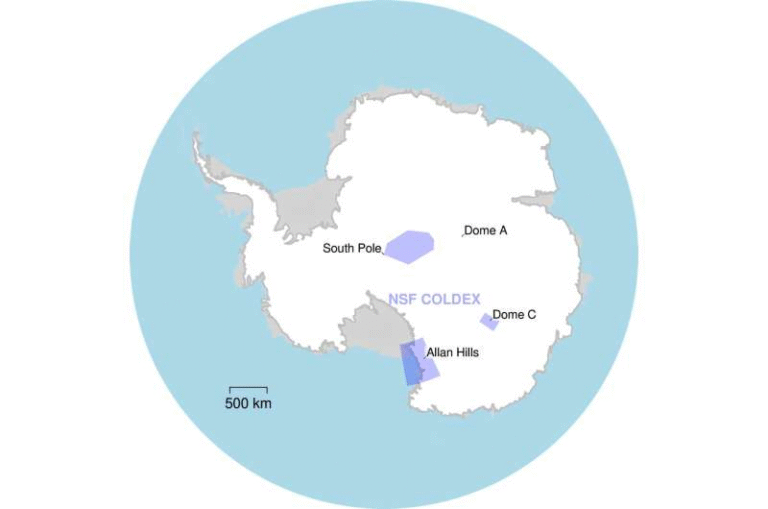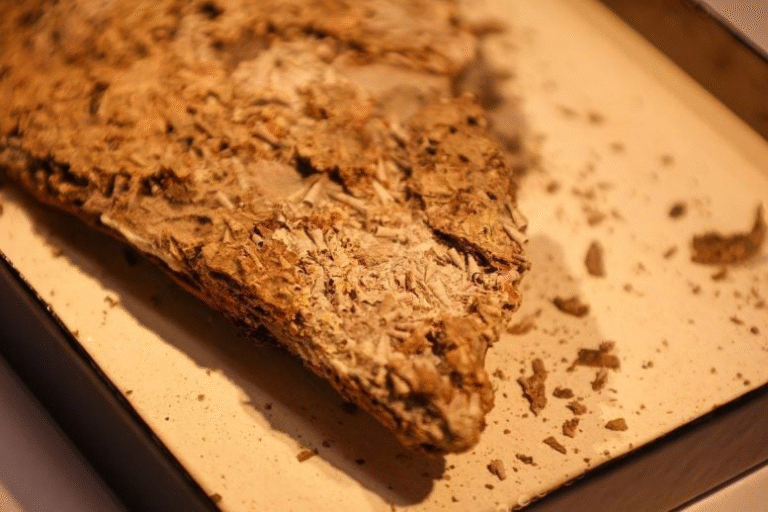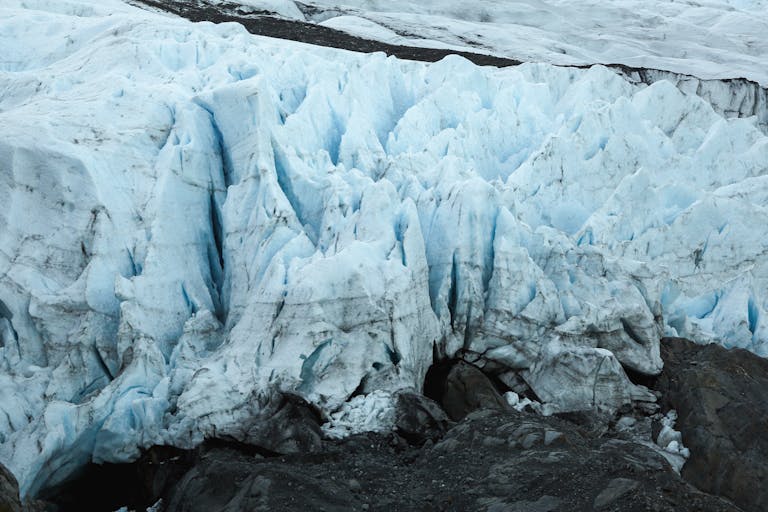FAU’s New CAROSEL Device Tracks Real-Time Nutrient Exchanges Between Sediments and Water

Understanding what happens beneath the surface of lakes, ponds, and coastal waters is becoming increasingly important as water quality problems grow worldwide. A new device developed by researchers at Florida Atlantic University’s Harbor Branch Oceanographic Institute is opening a fresh window into this hidden realm. Called CAROSEL — short for Chamber ARray for Observing Sediment Exchanges Long-term — this underwater system can continuously measure how nutrients and gases move between bottom sediments and the water above them. It’s a major step forward for scientists trying to understand how sediments influence issues like harmful algal blooms, nutrient pollution, and low-oxygen zones.
The movement of nutrients such as nitrogen and phosphorus across the sediment–water boundary, known as benthic fluxes, plays a significant role in shaping aquatic ecosystems. When sediments release dissolved nutrients like ammonium (NH₄⁺) and nitrate, these nutrients can fuel algae growth and contribute to harmful algal blooms that damage water quality, disrupt wildlife, and negatively impact economies. Sediments also act as natural archives, holding clues about past ecological conditions. But to interpret these clues and understand modern-day nutrient cycling, researchers need reliable measurements — something that traditional techniques have struggled to provide.
Conventional benthic flux measurements typically involve deploying a chamber on the sediment, leaving it in place, and then retrieving it hours later. This usually yields just a single data point and requires multiple boat trips plus manual labor. In contrast, CAROSEL automates this entire process. Once deployed, it can run independently for several weeks, taking multiple measurements each day without human intervention. This allows researchers to capture rapid changes, subtle shifts, and complex cycles that would otherwise go unnoticed.
To test the new system, FAU researchers deployed CAROSEL in a shallow freshwater retention pond on their Harbor Branch campus in Fort Pierce, Florida. Retention ponds are widely used in the state as Best Management Practices (BMPs) to prevent excess nutrients from reaching fragile coastal estuaries. Monitoring how nutrients move within these ponds is essential for understanding whether these BMPs are actually performing as intended.
During the multi-week deployment, CAROSEL recorded high-resolution data on nutrient and oxygen exchanges. The system revealed clear daily rhythms: oxygen levels in the water rose during daylight hours due to photosynthesis and fell at night as organisms consumed oxygen through respiration. The sediments, however, consistently removed oxygen from the water both day and night.
One striking result was that sediments steadily released ammonium (NH₄⁺) throughout the study period. Meanwhile, the water column displayed a pattern where nitrogen appeared to be added during the day and broken down at night, a finding that contrasts with what scientists typically expect. Since daytime photosynthesis usually consumes nutrients, this unusual pattern points to more complex internal processes happening within the pond.
Rainstorms also had noticeable effects. Shortly after rainfall, both ammonium and nitrate fluxes shifted quickly, demonstrating how sensitive nutrient exchanges are to environmental disruptions. The study also showed that nitrogen removal through nitrification and denitrification — processes that convert reactive nitrogen to inert nitrogen gas — was intense but highly variable. This has major implications for how well retention ponds remove nutrients before they enter larger water systems.
One of the most important contributions of CAROSEL is its ability to capture short-term fluctuations in real time. Many ecological models assume that sediment processes are slow and steady, but the device’s data show that these processes can change dramatically within just a few hours. Having access to measurements at such a fine timescale helps scientists and environmental managers better understand how weather, temperature, sunlight, and storms influence nutrient dynamics.
According to the researchers, the strength of CAROSEL lies not only in its autonomous design but also in its versatility. The system is compatible with a wide range of underwater sensors available on the market. That means it can be adapted to measure not just nitrogen compounds but also carbon dioxide, dissolved organic carbon, heavy metals, and other substances of environmental concern. Its design also allows deployment in both freshwater and marine environments.
Because sediments cover around 70% of Earth’s surface, the scientists behind CAROSEL view sediment monitoring as the next major frontier in environmental observation — similar to how society now widely monitors water quality, soil health, and air pollution. The ability to track nutrients and contaminants directly at the sediment–water interface could help predict ecological changes before they escalate into bigger problems like algal blooms or dead zones.
FAU researchers are already planning new projects using CAROSEL. One upcoming study aims to establish baseline nutrient fluxes in an area of the Northern Indian River Lagoon that is scheduled for dredging. Another project will examine legacy nutrient fluxes in Lake Okeechobee, where sediments are known to be a major source of nitrogen that fuels harmful algal blooms. There is also strong potential for using CAROSEL to evaluate why some BMPs in Florida are underperforming and how they can be improved.
While sediment exchange processes may seem like a niche subject, they are deeply connected to many of today’s biggest water-quality problems. Excess nutrients from sediments can undermine restoration efforts, feed toxic blooms, and lead to costly ecological damage. Real-time tools such as CAROSEL provide data that can help agencies, researchers, and local communities respond more quickly and design better management strategies.
To help readers understand the broader context, it’s useful to look more closely at what benthic fluxes represent. Nutrients and chemicals don’t simply stay locked in the sediment — they interact constantly with overlying water. Factors such as temperature, oxygen levels, microbial activity, and storm events all determine whether sediments act as a source or a sink for nutrients. When sediments release high amounts of nitrogen or phosphorus, the water above them becomes more likely to support algae growth. In shallow systems like retention ponds or lakes, where sunlight can easily reach the bottom, these nutrient exchanges can play an even larger role.
Nitrogen, in particular, exists in multiple forms that continually cycle through natural processes. Ammonium (NH₄⁺) is often released from bottom sediments when organic matter decomposes. Nitrate, another form of nitrogen, is produced when microbes convert ammonium through nitrification. Under low-oxygen conditions, nitrate can be transformed into nitrogen gas and removed from the system altogether through denitrification. These steps are essential for maintaining healthy aquatic environments, but they fluctuate wildly depending on light levels, temperature, and rainfall — exactly the patterns CAROSEL is designed to capture.
Looking ahead, a widely deployable device like CAROSEL could form part of larger environmental monitoring networks. By combining sediment data with other water-quality measurements, scientists could improve predictive models for harmful algal blooms, track changes in nutrient pollution in real time, and understand how climate-driven events such as storms or heatwaves influence water systems.
CAROSEL’s successful early deployment suggests that widespread use of autonomous benthic flux monitoring may become standard practice in the coming years. As nutrient pollution continues to challenge ecosystems around the world, tools that reveal the hidden dynamics at the sediment–water boundary will be essential.
Research Paper Link: https://doi.org/10.1002/lno.70250





